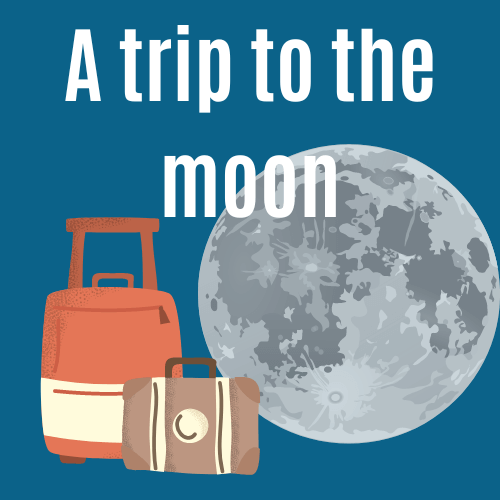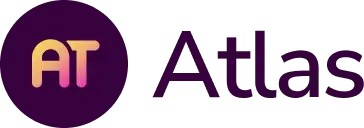I’d learn anything but that.
I love learning new languages. I grew up bilingual in German and English with exposure to ASL. As a teenager, I learned Spanish and lived in Guatemala. During college, I studied Arabic and then moved to the Middle East. Two years ago, I decided to develop my ASL skills and took several community college classes. So yeah, it’s my “thing”.
But I’ve never had any interest in Latin.
Sure, I can appreciate its significance as the origin of many other modern languages. I know that studying Latin can support legal and medical careers. But frankly, I would prefer to learn just about any other language.
That is, until my colleague Ann developed her four-year Latin storyboard.

It begins with two years focused on the gods of Mount Olympus. Each unit of the course is dedicated to one of these gods and explores the language, history and culture relevant to that god. The third year is focused on the 10 muses and their gifts of music, comedy, astronomy and so on. But the real motivator for me would be to make it all the way to year four: Monsters. An entire course focused on the mythological monsters, their powers and their stories. I’m intrigued and infinitely curious. Wouldn’t you be?
Now, I’m intrigued by Latin. I see its connections to my own interests. I’d study it in a heartbeat.
Narrative Course mapping
We began this shift towards narrative course mapping in the spring of 2022 after several in our organization, the World of Learning Institute, had attended the Pennsylvania Association for Supervision and Curriculum Development conference and heard Heidi Hayes Jacobs speak. Her keynote focused on the topic of her next book: Streamlining and Storyboarding Curriculum. Listening to Jacobs talk about the power of story and how narrative courses build strong connections between the learning and the learners, I was compelled and motivated. No, the truth is, I was straight-up giddy. Maybe you know the feeling: when you hear a new idea and it resonates so deeply, you know it holds truth. Jacobs was articulating a deep truth about storytelling as education and I wanted to make it happen in my own context.
How we started
In my work with Ann over the next few months, we revisited her original Latin syllabus. What we first noticed were many units organized by grammatical concepts. Though these concepts are important, and would continue to be incorporated into her new narrative course maps, we recognized that they were not compelling, neither to her as teacher nor to her students. No one studies Latin in order to understand third declension adjectives! The units didn’t provide a “why” for the learning.

Several other units were organized thematically, like one on various cities and roads, but even then, there was no story. A theme can connect ideas, but not drive movement from one idea to the next. As Ann shared her own passion for Latin and its rich, storied past, we identified not just themes, but settings, characters and plots that move the learner from one experience to the next in anticipation.
What about other subjects?
Let me pause and check in with you. Maybe you are skeptical at this point. If you teach Calculus or Physical Education, maybe you are thinking Latin is easy, the stories are already there. And you’re right; it was a great subject to open us up to narrative course building. But there are stories in all of our subjects. There is a story of Psychology and a story of Algebra. In fact, there are infinite, but to identify them, we have to make a shift that Heidi Hayes Jacobs encourages; we have to start thinking of ourselves as authors.
As authors, teachers are visionaries and creators. They imagine a new world and then write it into existence. This may feel uncomfortable and unfamiliar at first, but the ability to imagine is within all of us. Sometimes, it takes another person asking questions to bring out those stories.
Finding the seed
When I work with our teachers, coaching and supporting curriculum work, I ask them first “What do you really love about your subject? What motivated you to pursue this subject as a career? Why is this the most important thing students will ever study?” These initial questions help teachers remember why they are here in the first place. We were all learners once who became compelled by a certain content area or skill set. Often, there is a seed of a story in that origin.
Ann told me she loved Latin for the gods, their conflicts with each other. The drama between the god of love and the god of war was familiar to any married person, or any teenager navigating a young relationship, for that matter.
Erin, a Chemistry teacher, shared that sustaining life is the most important problem of our generation. As a species, we can’t protect our own future if we don’t understand the chemistry that life requires. She wonders if we can find what we need to live on other planets. And these questions require Chemistry to answer. Her story is in there. Do you see it? It’s a story of the survival of a species, it’s a futuristic sci-fi.
And Pana told me about the first time she lived in Japan with a host family. She was so struck by the beauty of the passing seasons, each with its own traditions, foods and rituals. The story of her Japanese language class is one of the passing of time, cyclical time, not linear time. It’s a story that challenges us, as westerners, to rethink very fundamental concepts of self. It’s profound and beautiful. Once again, I am drawn in.
Dare to imagine
Imagine if all of the courses in your school were presented to children and families this way: a story waiting to be told and lived. What would your stories be?

Design Calculus - a high school math class that uses architectural design projects to learn and apply Calculus concepts and formulas
A Trip to the Moon - an elementary language arts class that invites students to prepare for an imaginary trip to the moon with itineraries, packing lists, and journal entries


Human Nature in War and Peace - a high school Psychology class that considers how the human brain responds to times of extreme stress as well as times of balance and health
History through Children’s Eyes - a high school World History class that examines major eras and events of world history as they were experienced by the young people who lived through them


My Life as a Dinosaur - an elementary Science class that images the world as dinosaurs experienced it, navigating the ecosystems, habitats, nutrition and life cycle that dinosaurs would have experienced
The Science of your Phone - a high school material science class that explores every aspect of your smart phone from its plastic case to its glass screen to its electrical currents


Physics in a Time Machine - a high school Physics class that tells the story of how we have understood our physical world over the past 2500 hundred years and how we may view it in the future
About The Author

Olivia is a Virtual Learning Specialist at the World of Learning Institute where she happily works with a brilliant group of teachers bringing virtual course options to schools when they can’t find an in-person teacher. A proud curriculum nerd, Olivia believes that teachers can act as authors and designers, weaving stories and creating spaces for curiosity, creativity and community. Olivia has learned in many places as a student including her childhood home in the woods of rural Pennsylvania, Middlebury College in Vermont, and the University of Pittsburgh. She has also learned many places as a teacher including the Miguel Angel Asturias Academy in Guatemala, the Ramallah Friends School in Palestine, Tyrone Area School District in Pennsylvania and now at Appalachia Intermediate Unit also in PA.

